Text
Going Forward
As a team we have chosen to go forward with Texan Masquerade. The reason being that we felt the setting and theme of the game was a lot of fun and could open up many possibilities to play around with. The models and props that have been and could be made for a setting like this offer potential for a lot of character to be instilled in the world itself. We also feel it’s one of the more difficult of the three to execute and on that account would like to challenge ourselves. We thought about Boom Boom Space Train although, it seemed to be a little too easy mechanically and artistically. In order for the team to work efficiently and in tandem with one another a lot of communication will be necessary. Trello, a tool that had been overlooked in some of our prototypes, will help in creating this efficient work flow with one another.
1 note
·
View note
Text
Prototype Reflections
Boom Boom Space Train
Our first prototype was probably the one we executed the best. From design concept to developing the prototype I feel, Boom Boom Space Train had all mechanics implemented into the prototype. As well as the template for levels being clearly thought out and a really good set of models to work with.
I feel we were all able to achieve what we set out to do for this prototype. With things running smoothly lighting was also implemented which further set the scene for a space environment. That being said, it was probably the most straightforward and easiest concept of ours to execute. I believe the way this project turned out certainly reflects on the intermediacy of work needed.
In addition, a part we were not able to get in (though we always felt we wouldn’t) was the boss fight at the end of the train. The idea being, after fighting your way through the train you enter a large arena themed room where you would fight the boss of that train.
Finally, I felt we injected the theme of ‘vulnerability’ in an interesting way into Boom Boom Space Train. The notion being that because the train itself was destructible when using devastating weapons. The more aggressive the player was when getting through the level, the more difficult traversing it would be for them. The player themselves was the catalyst for their own vulnerability.
Anti Penguin
Our second prototype was certainly the one we were most hyped about.
DON’T BELIEVE THE HYPE.
Although, we were most excited about Anti Penguin, I feel it was the prototype we executed the worst. In concept and on paper Anti Penguin seemed really good. Though, when we actually began to apply these concepts and mechanics into development there proved to be many more issues than expected. Mechanics were finicky and not working quite as expected.
I don’t think I implemented player mechanics and level flow / layout / mechanics in tandem with one another successfully. What I mean by this is; based on the player mechanics the level the player moves through must work in tandem with those player mechanics. If the core mechanic was to jump but, what happened during the game and the level itself never required the player to jump, something is wrong. Either the core mechanic needs to change or the level should fit the abilities of the player.
I believe conceptually and thematically Anti Penguin was a really fun idea and could have been quite comical. The theme of ‘transcendence’ worked well with the ever increasing heat stages of the Anti Penguin. It’s just a shame it wasn’t executed correctly.
Texan Masquerade
Our final prototype was the most story and narrative lead game. And altogether had the broadest amount of mechanics to implement. In other words, it was our most difficult prototype in regards to knowledge needed and knowledge already understood. None of us had previously looked into narrative or story building and with this game seeming like a sort of detective themed tribute to Psychonauts by Double Fine Productions it needed a lot of thought put into the character(s), story and narrative.
We built a vertical slice for this prototype. We did this so we still had something to show mechanically that would work for the overall game. So instead of spending time thinking about story or narrative we implemented the core mechanics and displayed them in a controlled environment. The core mechanic for Texan Masquerade would be the use of masks and their various abilities. Jimmy James (protagonist) is a detective on the case to taking down the infamous outlaw gang of psychic cowboys. Wearing a mask endows Jimmy James with special abilities which can be used for stealth and subtlety or enhancing his detective capabilities. Overall this prototype went well, I believe that was due to the scope of the prototype. It was far more achievable to create a small vertical slice than creating a fully working level with player mechanics (as we tried in Anti Penguin). The theme we chose for this would be ‘trade’ though we also delve into ‘fate’. The former relates to the player being able to trade and/or merge masks at the Mask Maker’s stall and the latter relating to the notion that it is Jimmy James’ destiny to take down this gang of psychic cowboys.
0 notes
Text
Last Year At Futureworks!
The start of the final year has....started. It’s starting RIGHT NOW...(3 days ago). I’ve got my honours blog up and running so have a look at that if you would be so kind! https://richardburtonhonours.tumblr.com
1 note
·
View note
Text
Key Designers – Frontier Developments TOM KEWELL
Tom is a Games Designer at Frontier. Initially starting on the Kinect Disneyland Adventures he eventually made his way onto the Elite Dangerous team and has since been working with them for two and a half years. Studying games design at university he eventually began applying to studios for design positions. He makes clear that a lot of game studios want the people they are employing to have a degree. However, with hard effort and a good body of work for a portfolio, you may not necessarily have to go the route of acquiring a degree. Tom’s advice for anyone wanting to become a games designer would be to find any game that has a level editor and have a go at making levels. These become great pieces for a portfolio. Another viable tactic for portfolio building is to mod and change already made games. Doing these things display your ability, skills and understanding of design. Before becoming a games designer Tom played around with a number of games and modding them. “it’s a great way for a prospective designer to create portfolio material, and you’d be surprised how many games have really good editors” – Tom Kewell, 2013 Tom’s pet peeve in design is when a game breaks its own language. The example he gives of this is when a game has taught the player that ‘B’ is the block button, it should remain that way. When the player is thrown into quick-time events which require them to press a series of different inputs to try to trip a player up, this breaks the game language and is frustrating for players. When asked about the DDF (Design Decision Forum), Tom stresses the importance of the constant communication between the Elite Dangerous community and Frontier Development designers. Getting constant feedback and an influx of opinions gives ideas and great inspiration on how to improve the important aspects of Elite Dangerous. DAN DAVIES
Dan is a Games Designer at Frontier who currently works on the Elite Dangerous team. His role varies depending on the task at hand. Overseeing things such as gameplay systems through from beginning to shipping, resource management for weapons, ships and modules, and even working directly on the layouts of the levels and stations, in space and on planets, setting out positions of start points, powerups and destructibles. A very interesting technique was used during development of the heat and stealth mechanics for Elite Dangerous. Dan Davies and team implemented these mechanics into a “Predator and Prey” scenario which was separate to the actual game. In this scenario, you would hunt smaller ships while trying to avoid the larger ships. This is a great way to test and tweak mechanics before they actually make it into the game. Dan makes mention of how he dabbled in Stellar Forge, the galaxy creation simulator Frontier Developments use for Elite Dangerous. Learning a lot about astrophysics as he continued to use Stellar Forge. This brings to light the importance of knowing more than just a chosen discipline and the importance of taking in as much information as possible. Job Prospects WHAT STUDIOS WANT
After looking through many job listings, forums and videos I found a very common requirement of a level designer was the ability to communicate. Dependent on the company, the level designer would be required to work closely with environment artists, programmers, people within other disciplines of design as well as the player base, the community. This strengthens a point that was hinted at by Dan Davies and the importance of knowing more than just your chosen discipline. It really helps to work with other disciplines when you understand what is required of them. Staying with communication, another common requirement that came up was the ability to articulate your designs. To be able to communicate them clearly to a team of people. Some studios want more programming and scripting knowledge others want their level designers to know more about narrative and architectural design. So, the necessary requirements vary quite a lot over the spectrum of disciplines. This only reinforces the necessity of taking in as much information as I can for me to be able to work well and efficiently with others in the industry, all disciplines are connected. “Learn to see. Realize that everything connects to everything else” – Leonardo Da Vinci For myself, I will focus primarily on gaining an even stronger understanding of game design. While first, learning about environmental design, architectural design and narrative design as I already have skills and interests that can be built upon in those disciplines. Alongside all of this, programming and visual scripting will be necessary to complete my projects and this will be built upon by simply doing. TYPICAL SALARIES
Many of the job vacancies listed online have a competitive salary and even some with competitive salary + relocation, making it difficult to judge the average wage for a level designer. Though in an article from Game Design Schools (GDS, 2014) they found that the average level designer makes around $82,000 annually, however, those with ample experience working a prominent game studios could earn a salary of $98,000 annually on average. GRADUATE TO DESIGNER
There isn’t a chronological process to the steps needed to become a level designer after graduating but, rather a series of steps that one should be progressing in at the same time. Building your portfolio and beginning to apply for studios is something that can be done even prior to leaving university. Particularly building a portfolio, this will be in development as university years come to an end and should continue to be developed. Noting at what Tom Kewell said, using level editors and modding games is a great way to get content added into your portfolio. Getting out and networking is another vital step to this process. Many jobs aren’t advertised and can only be acquired through the people you know. So, by going to meetups and events a graduate designer is doing themselves a massive favour. Mick Hobson, a co-founder of Velocity Games, was featured in an online article in 2014 on Dice (formerly The IT Job Board) named ��How to Get a Job as a Game Level Designer’. He states that level design jobs are difficult to get and besides having the talent and social fit, one require luck and persistence. He makes a point about finding out the qualities and qualifications needed for the role, suggesting, “speak with studios directly to see how they hire, when they might be hiring and how someone would generally get a foot in their door” (Mick Hobson, 2014). Another tactic is to send hiring managers a personlalised introduction that details why you want to work with them and what benefits, both professionally and personally, you can bring to the table, in other words, a professional cover letter. So in short, the three steps I will take to achieve the role of level designer in the industry are, building my portfolio, research and apply to game studios and constantly network.
Portfolios
ENGAGING PORTFOLIOS
The importance of having an engaging portfolio is the difference between getting the job and not in cases excluding nepotism. Your portfolio is the first thing an employer sees and is the easiest and most effective way to show off your work. It’s a fact that most designers have their portfolios up on the internet so, not having one of your own will put you at a massive disadvantage. It is a way to showcase all your finest work to a studio. A game designer’s portfolio will vary compared to an artist, programmer or producer in that, it can have more than just videos and pictures. Having an online portfolio means that a designer can include links and downloads so people are able to play the levels you’ve created, giving them a first-hand experience of your work. A game designer could even include blogs and short documents detailing their processes while building a game, showing designed rule sets and how you work out problems. For a good example of why an engaging portfolio is important we can look to Blizzard Entertainment. They have program where they offer associates positions only to graduating students pursuing bachelor’s and/or master’s degrees (Blizzard, 2017). For any graduate applying for such a position it would be absolutely imperative to have a good portfolio so it is you that is most recognizable. As an aside, while looking through many professional level designers web portfolios I noticed a common layout to their pages. Always running down the page with large spaces to display a beauty shot of the level. These images were clickable and would then take you to a more detailed explanation of that level. It seems to be a format for level design portfolios that work and I will be looking into building one.
Key Games with Good Level Design
GOOD LEVEL DESIGN
I decided to narrow my choices down to two games that I believe have great level design. These are, Half-Life 2 and pretty much any Mario game involving Koichi Hayashida but, I will focus on Super Mario 3D World. Pacing really makes a difference in level design. Not throwing too much at the player while still allowing them to have fun and be engaged in the game. Both of these games engage the player in their own way. Half-Life 2 uses an interesting technique of the build-up/release formula. This formula is rather self-explanatory, as the player progresses through a level the tension builds and builds. Having the player constantly engaged and absorbed into the rising tension of the game which eventually comes to a head and is released. Consider the Water Hazard chapter, as the player progresses they are being chased and hunted by an attacked helicopter, wherever you go the helicopter follows and finds you constantly building tension. By the end of the level Gordon acquires a massive gun allowing him to shoot down the helicopter releasing all that built tension. Super Mario 3D World uses the four step level design. This is where a mechanic can be taught, built upon, twisted and then eventually thrown away. Mechanics are taught in a safe environment and eventually built upon meaning, the mechanic is used in an environment where danger can occur. Then the mechanic is further built upon and twisted adding another layer of danger to test the players skills until eventually the mechanic is again used in a safe environment for the conclusion of the level. As an example, we can look to the Cakewalk Flip level in which, there are panels that flip whenever the player jumps. At the beginning if the player misses a panel they fall below to a lower level and are able to try again. Now the second step is introduced by taking away that lower floor, if the player misses a panel they fall into the ether of the Mario world. For the third step Koichi Hayashida introduces a bumper enemy that sends out blast radiuses over the flip panels, the player must now dodge the blasts while still landing on the panels and not falling below to their doom. Finally, the player is given the chance to use their newly learned skill using the well-known Mario flag pole sequence. Hayashida says he is inspired by the narrative structure of kishōtenketsu. This describes the structure and development of classical Chinese, Korean and Japanese narratives. Originally used in Chinese poetry as four line composition. It is also used in four panel Japanese comics with each of these stories introducing a concept, developing it further, hits the reader with a twist that changes things and then provides a conclusion. There are many forms of great level design and these are only two formulas used. Going back upon myself, it’s important to take in as much information as possible, not only in your chosen discipline but, in the other game industry disciplines and everything else.
0 notes
Link
This video quickly details some of the models and modular kits I’ve made for The Harbour
0 notes
Link
Being so focused on developing this game I had forgotten to do updates! My apologies! A lot has been added to the game since the time of the first video!
0 notes
Link
A VERY early look at The Harbour. In this video I give a brief explanation of what the game is going to be.
0 notes
Photo
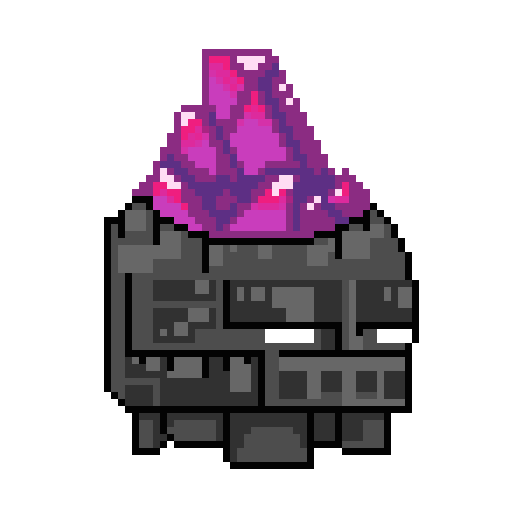
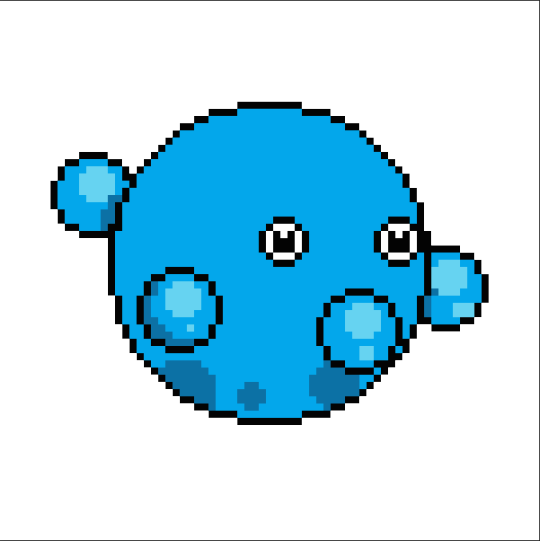
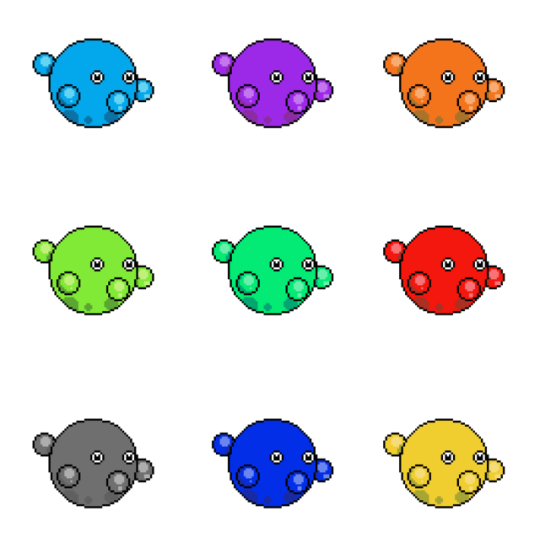
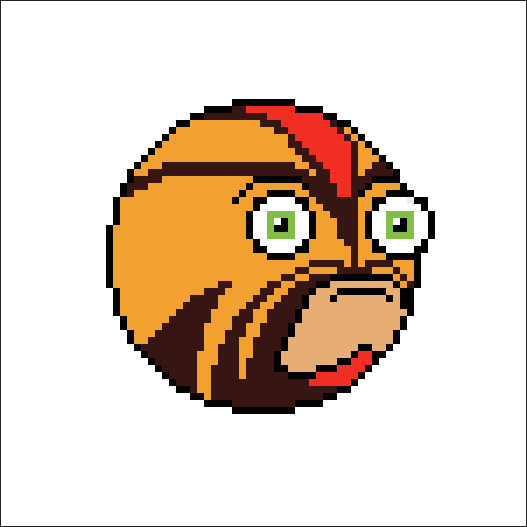
Variations of playable characters for the game Poly Warp. Certain characters would be unlocked after completing certain levels. For example the crystal rock“poly” would only be playable after completing the Crystal Rock Depths level. Some characters may only be unlocked after completing an achievement as in beating a level within a time limit. This type of reward system implores replayability for the players that want to unlock everything a game has to offer.
0 notes
Photo
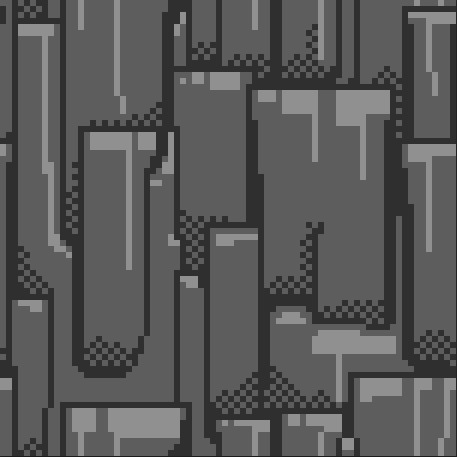
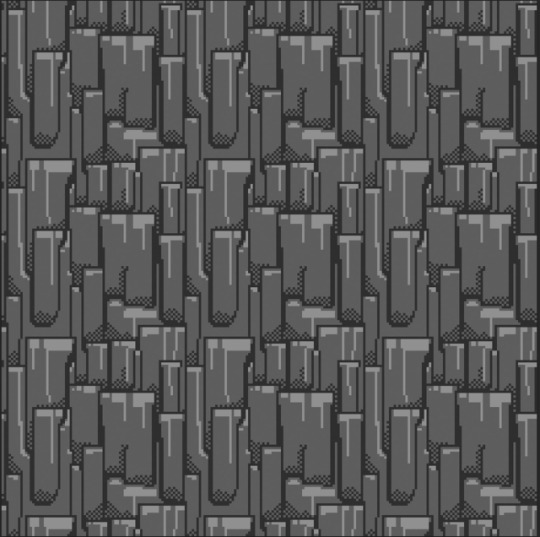

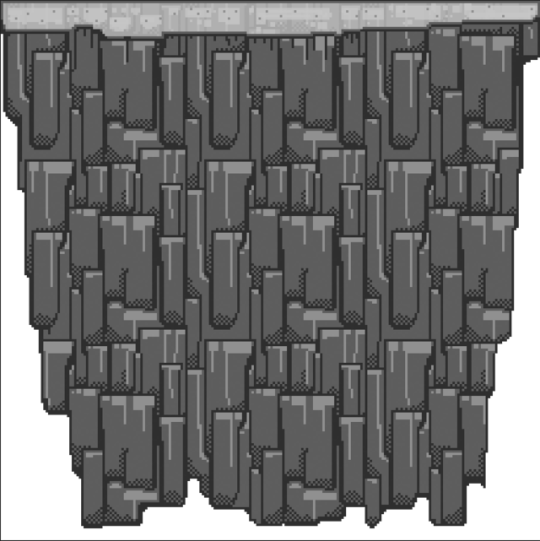
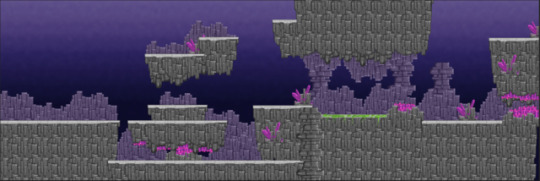
For Poly Warp I created a tiling texture. This was very helpful in quickly creating new platforms to place within the game. Above you can see the progression from simple tile to the larger floating platforms used within the game. Reusing this technique made it easy to create a diverse level.
0 notes
Photo
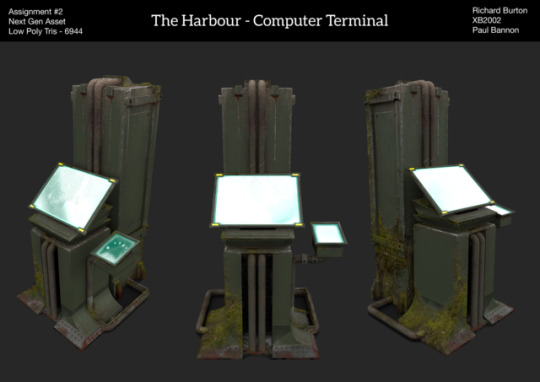
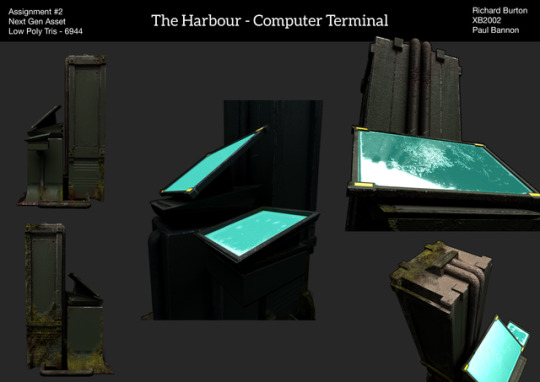
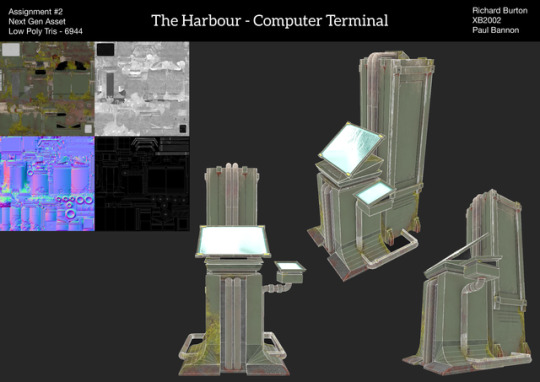
Final renders and printouts for assignment #2, creating a next gen asset. For this assignment we had to create a high poly model with a 4k texture applied to it. We also needed to bake this onto a low poly version of the model. Above are the final three compositions I printed out for the hand in, they are as follows; 1) Standard display shots 2) Beauty shots 3) Low poly + data shots
0 notes
Link
Big improvements and implementations have been made in this update!
0 notes
Link
Continuing development!
0 notes
Link
More mechanics are being implemented into BankBros!
1 note
·
View note
Link
Working out the starting mechanics for the prototype game BankBros
0 notes
Text
XB2001 - Technical Games Design - Reflective Blog Posts
How have your experiments and tests affected your outcome?
I knew from the start I did not want to make a simple outcome for this assignment - by simple I am referring to the scope of the outcome. Using simple switches, doors and levers I was able to create a world for a player to run around in and interact with. Essentially, my outcome became a prototype exploration game. Implementing new mechanics such as, the teleportation device and grapple hook, caused me to rethink the design and layout of the level. Now that the player had far more mobility in terms of level movement I had to begin to think of verticality. Although I was never able to implement new level designs to compliment the new mechanics, doing this prototype has encouraged me to think of verticality in future game levels. Verticality - Verticality relates to the scale of spaces in a game and the player's ability and freedom to traverse them. It implies that a player has freedom of movement that extends to vertical planes through abilities, vehicles, or level design.(Giant Bomb, 2015)
How creative do you think your solution is? I believe my solution went beyond what the brief stated for the completion requirements. We were asked to solve a solution for one mechanical problem in whichever way you wanted. Initially I chose the lever problem, from there I figured I could implement the use of a moving platform to traverse a gap with the use of the lever. This would solve two of the four mechanical problems (lever and gap). When I began level designing or white boxing the level. I found ways to implement all four mechanical problems (lever, gap, locked door and tower) into my rooms. Sometimes using all four in conjunction with one another.
Allowing the player to move vertically in the game with the use of the teleportation device and grapple hook became the solution for the tower. Many of the locked doors would be opened by levers or buttons and even generators (a different type of switch essentially) hidden in the levels. The characters double jump and dash abilities allowed players to traverse large gaps. Conclusively, I believe I put my creativity to good use for this mechanical problem prototype.
What would you do differently next time? In the future I would definitely think more about level design and level flow. At least for the type of game I wanted to make. The fact that I did not keep this in mind from the beginning meant that I had to rebuild my entire level. I realised this was necessary after I had people play test the prototype. People often became lost and it wasn’t clear which way they were meant to progress through the level. Having to rebuild that level entirely gave me less time to focus on the game play mechanics. I also would have liked to fine tune the game play and movement mechanics in order for myself to understand Blueprints (Unreal, 2014) and the Unreal Engine itself.
What went well and what did not? The consistent issue with this prototype was the level design. In the first version the levels were too complex and obfuscated the players direction. Apart from the level design, being a newcomer to the world of scripting I naturally found Blueprinting a bit daunting. However, throughout the creation of this prototype I found myself become increasingly confident within Blueprints. I really feel like I am beginning to understand the basics of scripting. At the very least within Blueprints, computer language is another world entirely! (Giant Bomb, 2015) - http://www.giantbomb.com/verticality/3015-311/ (Unreal, 2014) - https://docs.unrealengine.com/latest/INT/Engine/Blueprints/
0 notes